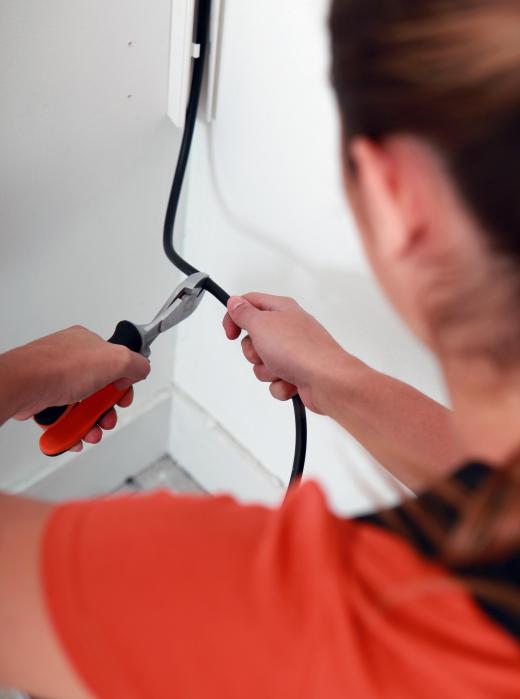Insulated wire is wire covered in a layer of insulating material to provide protection that will increase safety and efficiency. In addition to insulating single wires, companies can also individually insulate wires in a single bundled cable for the delivery of more complex electrical signals. Phone lines, for instance, require multiple wires, all of which need individual insulation to function correctly. Numerous manufacturers produce insulated wire products, including custom products for specific applications that may require unique components.
A variety of materials can be used for wire insulation, with polymers being particularly popular. Paper, glass braid, and synthetics are also available for various applications. The type of insulation determines the operating range of the wire; some insulators have very high heat and cold tolerances, for example, while others do not. Insulation can also limit the strength of the current carried by the wire, which is also determined by the wire width and material, along with some other factors.

One reason to use insulated wire is to prevent electrical shock. If a wire is exposed, people and animals who come into contact with it can be shocked. Exposure can also predispose wiring to shorts and other issues. Water splashing onto the wire, for instance, can act as a conductor and create an electrical fire or another problem. Insulation also reduces leakage and increases operating efficiency, as well as protects the wire from corrosion.

Manufacturers of insulated wire may color code their products. The colors can provide information about the situations the wire is rated for, and can also be useful for complex wiring applications where technicians want to be able to trace different wires. Color codes can be followed to link wires to the correct connectors, which can be useful in installation as well as maintenance activities. Some may be striped or otherwise patterned in addition to colored.

Typically, insulated wire is made through extrusion processes. These start with the production of wire from very high quality metal conductors, followed by another run through an extruder to apply a coating like a polymer jacket. Quality control can include detailed inspections to check for issues like cracked or incompletely applied coatings, which could cause problems while the wire is in use. The finished wire can be wound on large spools for distribution, with industrial customers receiving whole spools for their use, while other customers can buy precut lengths through hardware stores and electrical suppliers.
Ever since she began contributing to the site several years ago, Mary has embraced the exciting challenge of being a About Mechanics researcher and writer. Mary has a liberal arts degree from Goddard College and spends her free time reading, cooking, and exploring the great outdoors.

